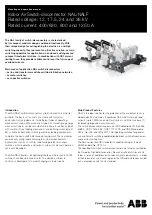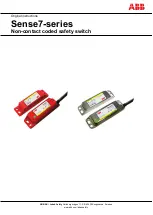
Managing System Files
Setting DHCP Auto Configuration
Cisco Small Business 200 1.1 Series Smart Switch Administration Guide
32
4
Setting DHCP Auto Configuration
Dynamic Host Configuration Protocol (DHCP) provides a means of passing
configuration information (including the IP address of a TFTP server and a
configuration file name) to hosts on a TCP/IP network. By default, the switch is
enabled as a DHCP client.
DHCP Auto Configuration
When the IP address is allocated or renewed, such as during a reboot or upon an
explicit DHCP renewal request and if the switch and the server are configured to
do so, the switch transfers a configuration file from the TFTP server identified to
the switch by DHCP. This process is known as
auto configuration
.
NOTE
If you enable DHCP Auto Configuration on a switch with DHCP disabled, you must
enable the DHCP by using the procedure is described in the
Management and IP
Interfaces
section.
The
DHCP Auto Configuration
page
configures the switch to receive DHCP
information pointing to a TFTP server and file for auto configuration purposes or
manual configuration of the TFTP server and configuration file in the event that the
information is not provided in a DHCP message.
Note the following limitations regarding the DHCP auto-update process:
•
A configuration file that is placed on the TFTP server must match the form
and format requirements of a supported configuration file. The form and
format of the file are checked, but the validity of the configuration
parameters
is not checked prior to loading it to the Startup Configuration.
•
To make sure the configuration of devices functions as intended and due to
allocation of different IP addresses with each DHCP renew cycle, IP
addresses must be bound to MAC addresses in the DHCP server table. This
ensures that each device has its own reserved IP address and other
relevant information.
















































